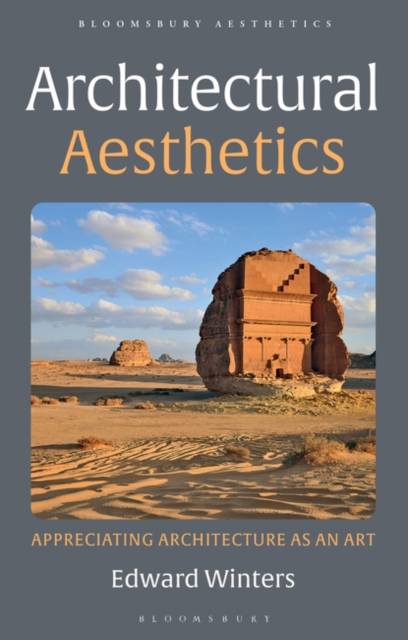
Je cadeautjes zeker op tijd in huis hebben voor de feestdagen? Kom langs in onze winkels en vind het perfecte geschenk!
- Afhalen na 1 uur in een winkel met voorraad
- Gratis thuislevering in België vanaf € 30
- Ruim aanbod met 7 miljoen producten
Je cadeautjes zeker op tijd in huis hebben voor de feestdagen? Kom langs in onze winkels en vind het perfecte geschenk!
- Afhalen na 1 uur in een winkel met voorraad
- Gratis thuislevering in België vanaf € 30
- Ruim aanbod met 7 miljoen producten
Zoeken
€ 152,95
+ 305 punten
Uitvoering
Omschrijving
The fine arts are traditionally seen to have intrinsic value: that is, they are valuable in themselves. But this poses a problem for architecture: its works are designed to serve our purposes, and therefore it is classed as functional. Carving out a new space, Edward Winters argues why architecture is a fine art and finds a place for the fine art of architecture in the cultural environment in which we structure our lives.
Winters reconciles intrinsic value, as a fine art, with extrinsic value, as shelter, security and comfort, without collapsing into the modernist conception of Functionalism. He draws on the Apollonian and the Dionysian to resolve the apparent conflict between the two values: the former requiring contemplative, detached reflection, the latter an engaged, embodied entanglement with the festive mood inspired by the immediate situation. Architecture, Winters claims, is to be regarded as functional; but this functionality is subsumed under the intrinsic aesthetic value of living well.
Introducing the main positions in the philosophy of architecture through the lens of the timeless argument about what constitutes art, Winters lays out a humanistic view of the medium and extends our understanding of aesthetics and the everyday.
Winters reconciles intrinsic value, as a fine art, with extrinsic value, as shelter, security and comfort, without collapsing into the modernist conception of Functionalism. He draws on the Apollonian and the Dionysian to resolve the apparent conflict between the two values: the former requiring contemplative, detached reflection, the latter an engaged, embodied entanglement with the festive mood inspired by the immediate situation. Architecture, Winters claims, is to be regarded as functional; but this functionality is subsumed under the intrinsic aesthetic value of living well.
Introducing the main positions in the philosophy of architecture through the lens of the timeless argument about what constitutes art, Winters lays out a humanistic view of the medium and extends our understanding of aesthetics and the everyday.
Specificaties
Betrokkenen
- Auteur(s):
- Uitgeverij:
Inhoud
- Aantal bladzijden:
- 232
- Taal:
- Engels
- Reeks:
Eigenschappen
- Productcode (EAN):
- 9781350210998
- Verschijningsdatum:
- 18/05/2023
- Uitvoering:
- Hardcover
- Formaat:
- Genaaid
- Afmetingen:
- 140 mm x 216 mm
- Gewicht:
- 417 g

Alleen bij Standaard Boekhandel
+ 305 punten op je klantenkaart van Standaard Boekhandel
Beoordelingen
We publiceren alleen reviews die voldoen aan de voorwaarden voor reviews. Bekijk onze voorwaarden voor reviews.









